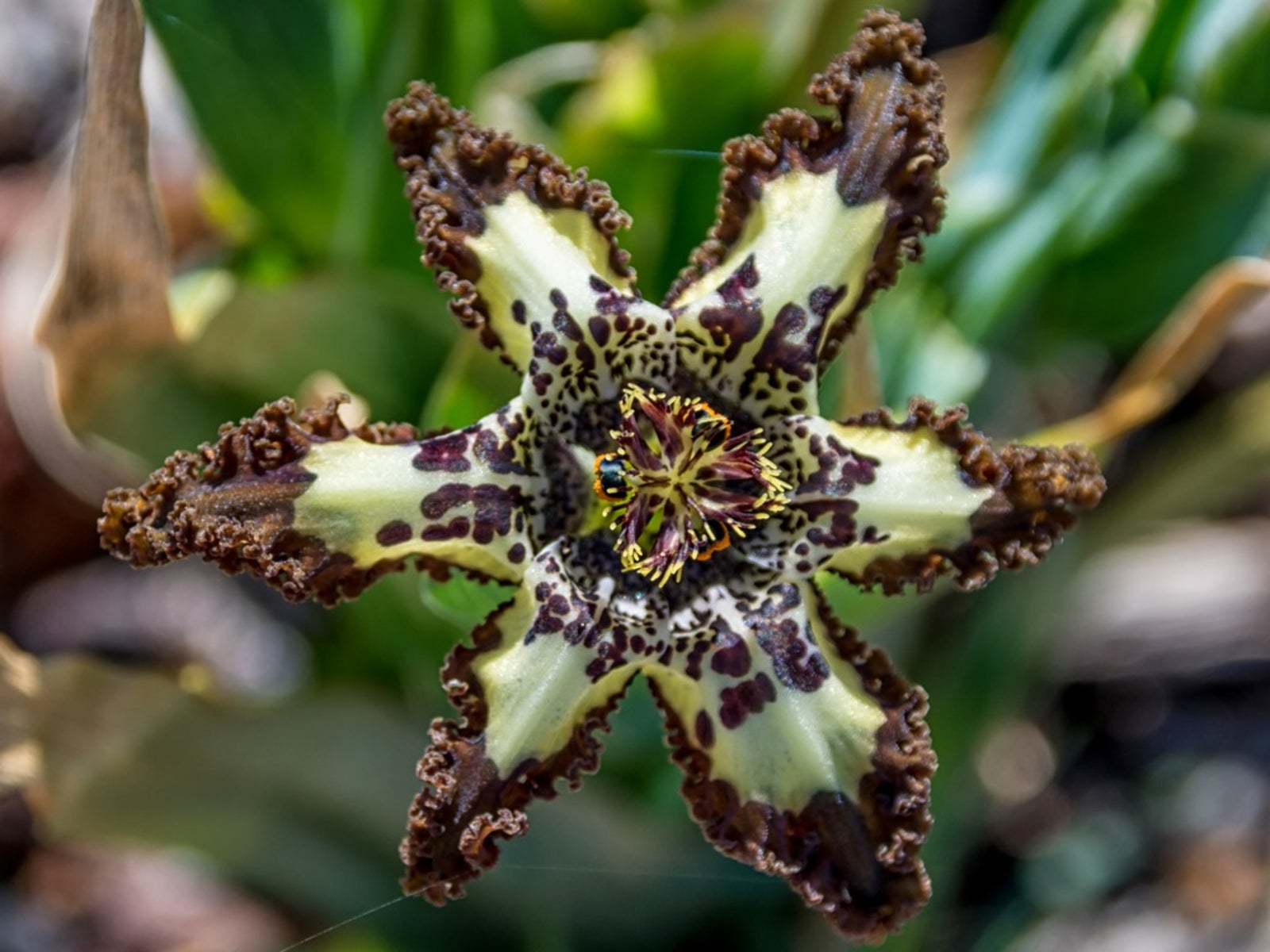What Is A Starfish Iris – Tips On Growing Starfish Iris Plants


Starfish iris plants aren't true iris, but they certainly share many of the same characteristics. What is a starfish iris? This remarkable plant is from South Africa and has an exotic, although familiar, appearance. Best grown in USDA zones 9 to 11, the corms can be planted indoors in northern locations. If you are a gardener who is always looking for something interesting and amazing to add to your landscape, growing starfish iris will provide you with those attributes and a whole lot more.
What is a Starfish Iris?
Ferraria crispa, or starfish iris, blooms in late winter to early summer and then enters dormancy in summer. A single corm will develop numerous corms over time, giving a brightly colored floral display after several seasons. In spite of the plant's exotic appearance, care of starfish iris is minimal, and the corms are easy to grow in a sunny location. However, this is a frost tender plant and cannot withstand freezes. Starfish iris has thick, fleshy, sword-like leaves that rise from the corms in fall. The 1.5 inch (4 cm.) blooms are the stars of the show. They have six creamy white petals with ruffled edges and purple to mauve spots dotted across the surface. Many forms of Ferraria also have a delicious vanilla-like scent while others have a strong disagreeable odor that attracts insects. Each corm produces just a few flowering stems and flowers are short lasting, often for only a day. Starfish iris plants do, in fact, resemble a frilly spotted starfish.
How to Grow Starfish Iris
Growing starfish iris is easy in a frost free zone, in full sun where soil drains freely. You can even grow the plants in containers with a loose slightly sandy soil. The corms produce best in temperatures of 40 to 70 degrees F. (4-24 C.). Happiest plants should experience cool nights 65 F. (18 C.). To grow the flowers in containers, plant corms 1 inch (2.5 cm.) deep and 2 inches apart (5 cm). Outdoors, install plants 3 to 5 inches deep (8-10 cm.) and space them 6 to 8 inches (15-20 cm.). Keep the soil moderately moist. When the flowers begin to die off, allow the foliage to persist for a while to gather solar energy to fuel the next season's growth. Then let the soil dry out for a couple of weeks and dig up the corms to store over winter in a dry paper bag.
Care of Starfish Iris
The biggest thing to remember with these plants is to divide them every three to five years. The developing corms will tend to pile up on each other, minimizing the number of blooms produced. Dig around the area and at least 12 inches (31 cm.) under the corms and gently lift them. Separate any that have grown together and only plant a few at a time in each location. Container plants will benefit from feeding just as the corms begin to produce foliage. Few pests and disease impact these pretty plants but as with anything having foliage, slugs and snails can be a nuisance. There are several cultivars from which to choose. The plants can be quite addictive so avail yourself of the many other colors and hybrids available. Your neighbors will gasp at the array of exotic flora in your garden.
Gardening tips, videos, info and more delivered right to your inbox!
Sign up for the Gardening Know How newsletter today and receive a free copy of our e-book "How to Grow Delicious Tomatoes".

Bonnie Grant is a professional landscaper with a Certification in Urban Gardening. She has been gardening and writing for 15 years. A former professional chef, she has a passion for edible landscaping.
-
 Terrifically Tubular Flowers For Hummingbirds: 9 Tube-Flowered Plants To Attract Hummers
Terrifically Tubular Flowers For Hummingbirds: 9 Tube-Flowered Plants To Attract HummersGrowing tubular flowers for hummingbirds helps you create the optimum feeding conditions for your winged friends. Here are nine tubed delights for hummers
By Tonya Barnett
-
 How To Grow Hydroponic Tomatoes For Fresh Indoor Harvests – No Soil Required
How To Grow Hydroponic Tomatoes For Fresh Indoor Harvests – No Soil RequiredLearning how to grow tomatoes in water is easy and allows you to harvest fresh-home-grown produce in every season without any mess.
By Ellen Wells